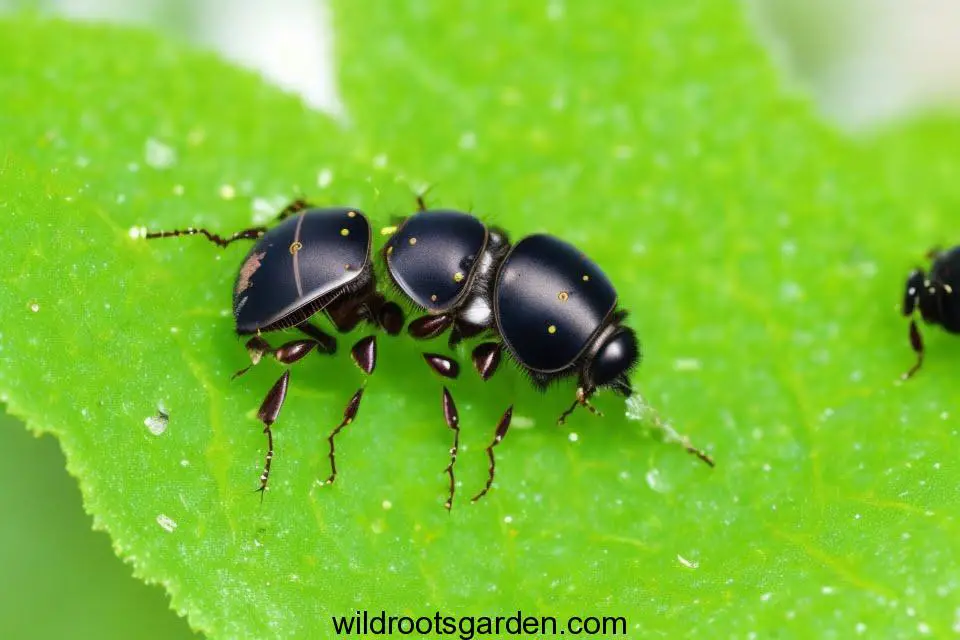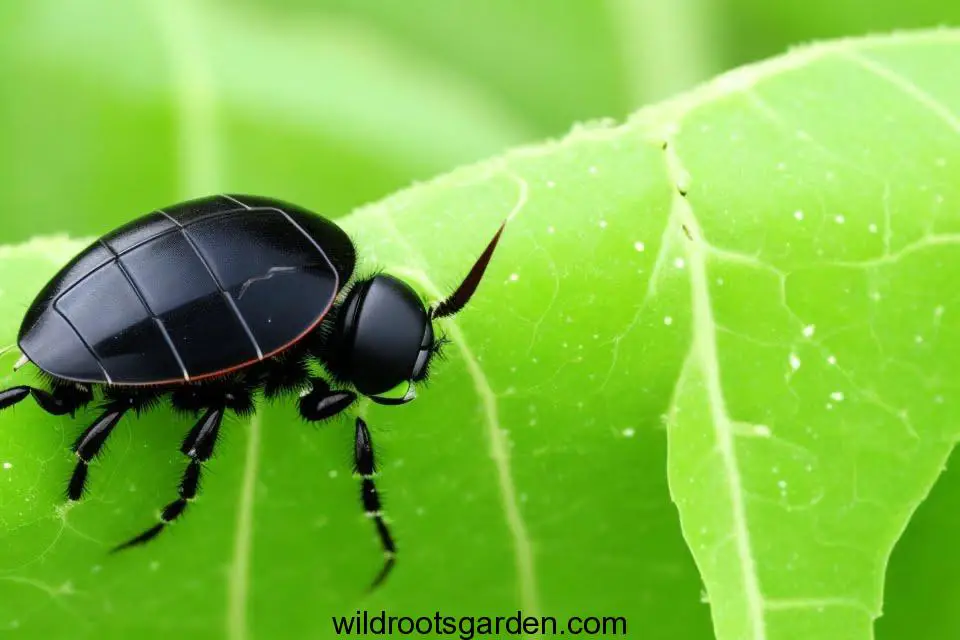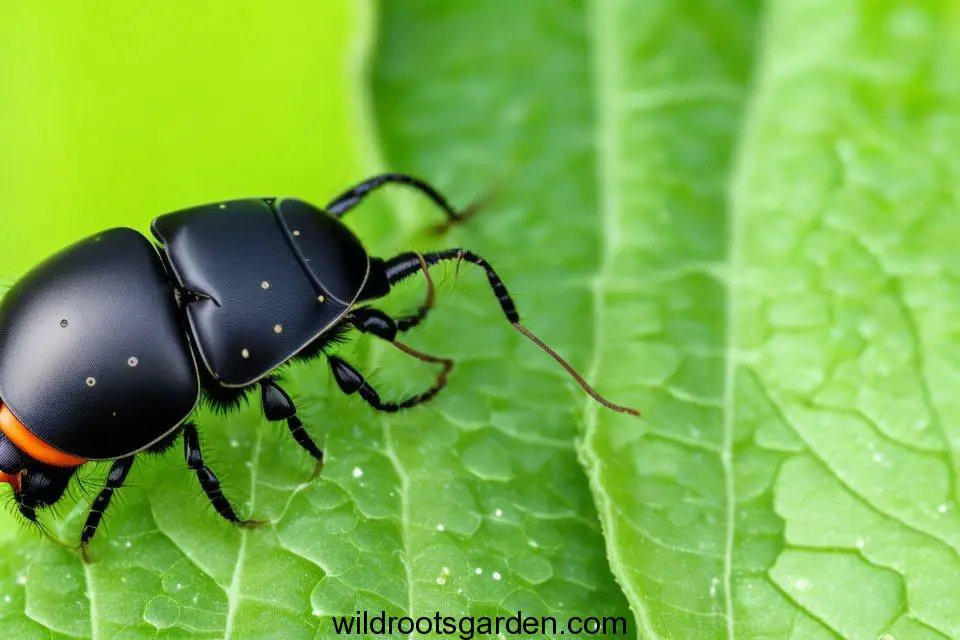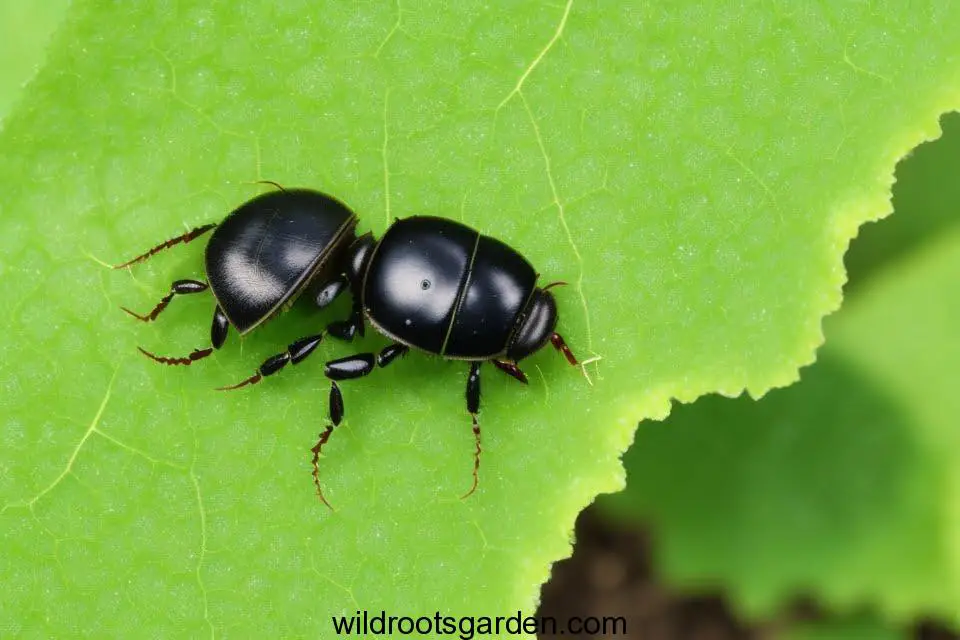Introduction
Controlling Flea Beetles: Effective Strategies for a Pest-Free Garden.Welcome to our comprehensive guide on controlling flea beetles and safeguarding your garden from their harmful effects. In this article, we will delve into the various aspects of flea beetle infestations, their potential harm to plants, and most importantly, the strategies you can employ to effectively manage and eliminate these pesky pests. Whether you are a seasoned gardener or a beginner, this guide will equip you with valuable insights to help you maintain a flourishing garden.

Understanding Flea Beetles
Controlling Flea Beetles: Effective Strategies for a Pest-Free Garden. Flea beetles are tiny, quick-moving members of the Chrysomelidae family of insects. They got their common name because of how they jump, which is similar to how fleas do. Although most species of these beetles are black or brown, some might have metallic undertones. They have larger hind legs that allow them to jump when startled and are around 1/10 to 1/8 inch long.
Are Flea Beetles Harmful?
When it comes to the health and vigor of your garden plants, flea beetles can be a serious concern. They destroy various plants’ leaves, stems, and even fruits as they eat them. Flea beetles are not dangerous to people or animals, but their ravenous appetites can cause agricultural yields to be diminished and growth to be stunted. In order to avoid serious infestations and reduce plant damage, quick action is required.
Identifying Flea Beetle Damage
Understanding the symptoms of flea beetle damage is essential before we talk about effective control strategies. You may put the right plans in place to lessen their impact by quickly recognizing their presence.
Leaf Damage
Controlling Flea Beetles: Effective Strategies for a Pest-Free Garden. Plant leaves are the primary target of flea beetles. The leaves have a shot-hole appearance as a result of the tiny, atypically shaped holes they produce during eating. The leaves appear to be covered in tiny perforations as a result of the typical “shothole effect,” which occurs when many damaged areas converge.

Stunted Growth
In addition to damaging leaves, flea beetle infestations can stop plants from growing and developing. Stunted growth and diminished vigor could be the result of stress brought on by the frequent assault on fragile leaves. Keep an eye on the general health and growth patterns of your plants to identify and address any issues caused by flea beetles.
Effective Strategies for Controlling Flea Beetles
Controlling Flea Beetles: Effective Strategies for a Pest-Free Garden. Let’s look at some tried-and-true methods to manage flea beetles’ presence in your garden now that we are aware of the potential harm they might bring.
1. Cultural Control Methods
Using cultural management techniques will dramatically lessen your plants’ vulnerability to flea beetle infestations. By employing these techniques, you may create a setting that deters these pests and fosters plant resistance.
Crop Rotation
Crop rotation is a practical method for stopping the flea beetle life cycle. You can reduce the accumulation of these pests in the soil by rotating plant families that are sensitive. To disrupt the flea beetles’ life cycle, avoid growing hosts in the same spot for successive growing seasons. Instead, choose alternative crops.

Weed Management
Weeds act as hosts for flea beetles, providing them with a convenient food source. Maintaining a weed-free garden helps reduce the attractiveness of your garden to these pests. Regularly remove weeds from the vicinity, especially those belonging to the same plant families as your desired crops.
2. Mechanical Control Methods
Controlling Flea Beetles: Effective Strategies for a Pest-Free Garden. Employing mechanical control methods provides an immediate solution to manage flea beetle populations. These methods physically prevent the beetles from reaching your plants or limit their ability to cause significant damage.
Floating Row Covers
Floating row covers serve as physical barriers that keep flea beetles away from your plants. These thin materials deter pests while allowing light, air, and water to pass through. Early in the growing season, cover vulnerable plants with row covers to keep flea beetles from getting to the leaves.
Handpicking
Even while it may be time-consuming, handpicking flea beetles, particularly in smaller gardens or for individual plants, can be an efficient way. Regularly check your plants, and hand-remove any beetles you see. To make sure they can’t get back to the plants, drop them into a pail of soapy water.
3. Biological Control Methods
Using the strength of nature’s allies can offer long-term flea beetle population control. You may create a healthy ecology in your garden that naturally lowers these pests by adding beneficial species.
Beneficial Nematodes
Microorganisms known as beneficial nematodes parasitize soil-based flea beetle larvae. You can successfully kill the larvae and stop the emergence of new flea-beetle generations by releasing these nematodes into your garden. For the best application and timing, adhere to the instructions that came with the nematodes.
4. Organic Insecticides
Organic insecticides can be used as a last resort if cultural, mechanical, and biological control approaches are unsuccessful in controlling flea beetle populations. Use flea beetle-specific organic insecticides and carefully follow the application and dose directions when choosing an organic insecticide. Known to be effective against flea beetles while causing the least amount of harm to beneficial insects are organic pesticides made from neem oil or pyrethrin.
Conclusion
In conclusion, flea beetles can ruin your vegetation if they are not controlled. But, you can successfully defend your plants from these harmful pests by using a combination of cultural, mechanical, biological, and organic control strategies. Always keep an eye on your garden, deal with any signs of damage right away, and put the tips in this article into practice. You may create a flourishing garden that is protected against flea beetle damage by being persistent and taking preventative steps.

